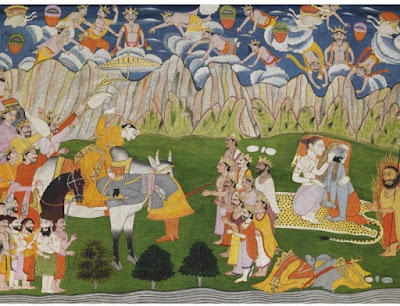Reading Notes: PDE Mahabharata Part A

Bibliography: Indian Myth and Legend by Donald A. Mackenzie (1913) The authors of the Mahabharata are Vyasa and Ganesha. Vyasa dictates everything to Ganesha who constantly writes. Vyasa has an interesting birth as his mother, Satyavati, is coerced by Parashara to make Vyasa on the condition of her not losing her virginity and her fish-like smell is replaced with a sweet-smelling fragrance. Bhishma is the son of King Shantanu and the goddess Ganga. Who helps the 8 Vasus and in return they they give a portion of their power to her son who becomes really powerful. King Shantanu has a kid with Satyavati, a son named Vyasa. Shantanu wanted to marry Satyavati but to do that he had to renounce Bhisma's claim to the throne which he did not want to do. Bhisma, originally known as Devavrata, went to Satyavati and renounced his claim to the throne earning the name Bhisma. Shantanu and Satyavati wed and have two sons but the first one dies early and the second is too young...









